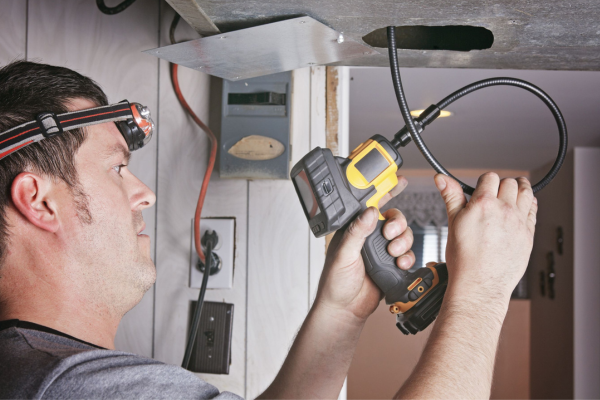
Indoor air quality testing is a crucial aspect of maintaining a healthy living environment. Poor air quality inside homes and offices can lead to a variety of health issues, including allergies, respiratory problems, and even long-term diseases.
Given these risks, it’s essential to understand the options available for testing indoor air quality. In this article, we will compare professional services with do-it-yourself (DIY) solutions to help you decide which might be best for your needs.
Understanding Indoor Air Quality
Before diving into testing methods, it’s important to grasp what factors affect indoor air quality. Common pollutants include dust, pollen, mold spores, volatile organic compounds (VOCs), carbon monoxide, and radon. These contaminants can originate from many sources within a home, such as cooking, cleaning products, furniture, and outdoor pollution seeping indoors.
Professional Indoor Air Quality Testing
Professional indoor air quality testing involves hiring a certified expert or company to assess the air quality in your space. Here’s what you can expect from professional testing:
- Comprehensive Analysis
Professionals use advanced equipment to detect a wide range of pollutants with high accuracy.
- Expertise and Experience
IAQ professionals are trained to identify the sources of pollution and understand the dynamics of air flow within buildings.
- Detailed Reporting
After the assessment, you will receive a detailed report that not only lists the types of pollutants found but also their concentrations and potential impact on health.
- Consultation
Most services include a consultation to discuss the results and possible solutions or improvements.
The main advantage of professional testing is its accuracy and reliability. However, it can be costly, and depending on the service, you might need to schedule it well in advance.
DIY Indoor Air Quality Testing
For those who prefer a more hands-on approach or wish to save money, DIY testing kits are available. These kits typically include devices or materials that can capture air samples, which are then sent to a lab for analysis. Here’s what you should know about DIY testing:
- Cost-Effectiveness
DIY kits are generally more affordable than hiring professionals.
- Convenience
You can conduct tests at your own pace and as frequently as you like.
- Educational
Performing the test yourself can provide insights into the specific conditions of your home and how they may change over time.
However, DIY kits have their limitations. They may not be as comprehensive as professional tests, and there is a risk of user error in sample collection. Moreover, interpreting the results without expert knowledge can be challenging. For More Information
Making the Right Choice
Choosing between professional and DIY indoor air quality testing depends on several factors:
- Accuracy and Detail
If you need detailed insights and accurate measurements, professional testing is the way to go.
- Budget
If cost is a major concern, a DIY kit might be more appropriate.
- Purpose of Testing
Consider why you are testing. If it’s for a general understanding, a DIY kit may suffice. However, if you suspect serious air quality issues, professional testing is advisable.
- Frequency of Testing
If you plan to test regularly, investing in a DIY kit might be more economical in the long run.
Conclusion
Both professional and DIY options have their own set of advantages and drawbacks. By considering your specific needs, budget, and the level of detail required, you can make an informed decision that ensures the health and comfort of your indoor environment. Remember, regardless of the method you choose, regular testing is key to maintaining good indoor air quality and safeguarding your health and well-being. Thank visiting incnewsblogs.com







